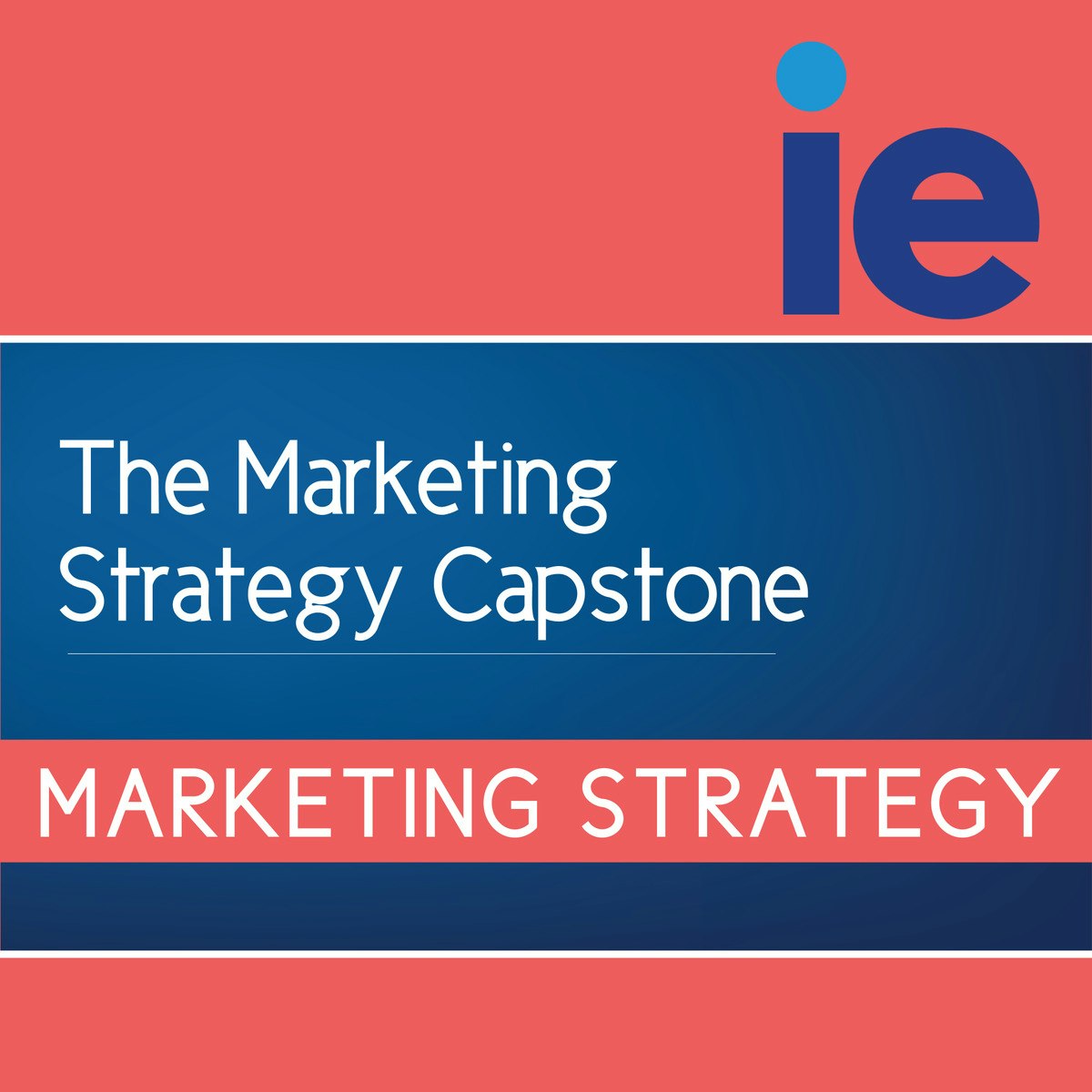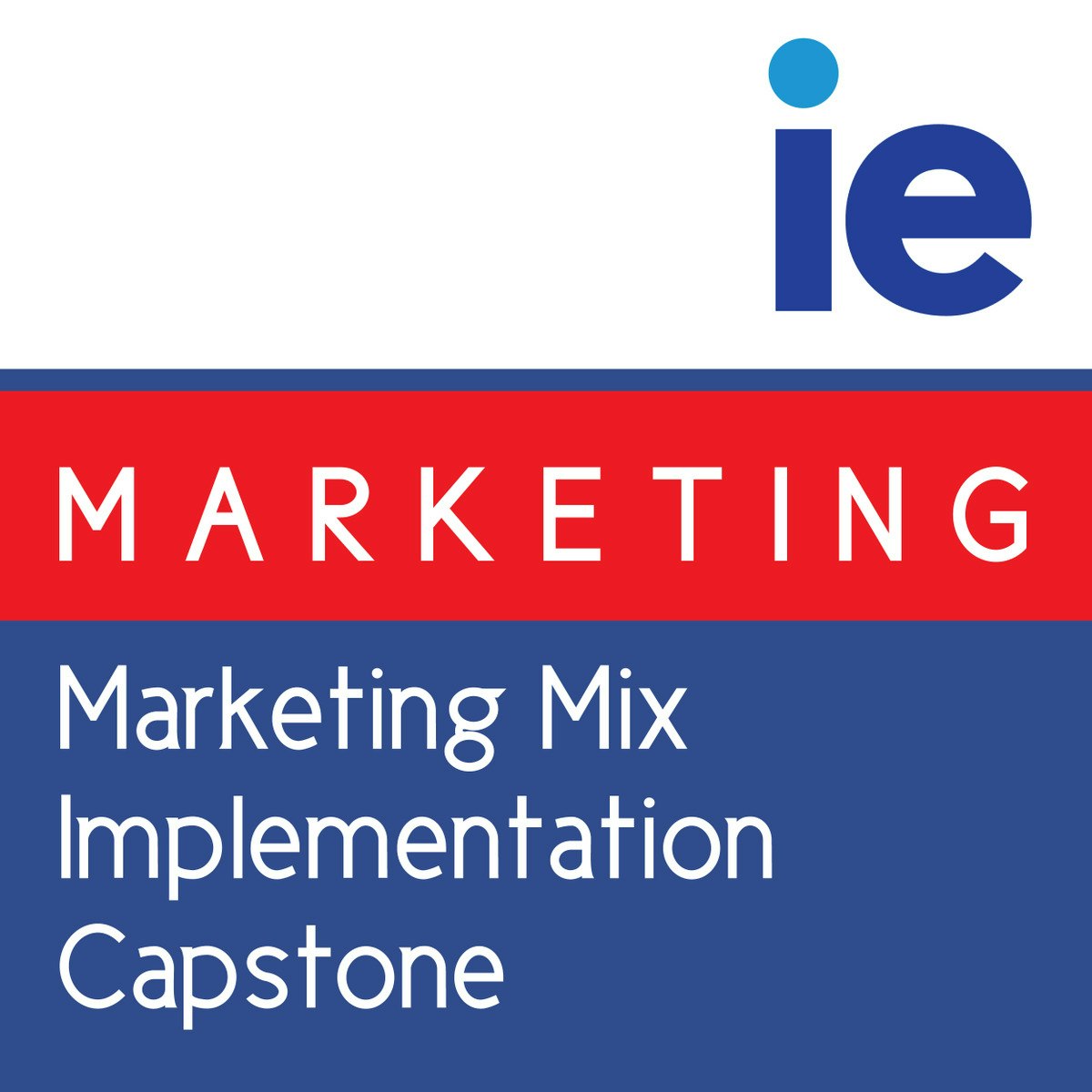Marketing Mix
Understanding the Marketing Mix: A Foundation for Strategy
The Marketing Mix is a foundational concept in marketing, representing the set of controllable tactical marketing tools that a firm blends to produce the response it wants in the target market. Think of it as the collection of levers a business can pull to influence demand for its product or service. At its core, the marketing mix helps businesses structure their approach to bringing a product or service to market, ensuring that key elements are considered and aligned with overall objectives.
Understanding and effectively managing the marketing mix is crucial for achieving business goals, such as increasing sales, building brand awareness, or entering new markets. It provides a framework for decision-making, allowing marketers to allocate resources effectively and adapt to changing market conditions. For those new to business or marketing concepts, grasping the marketing mix is often one of the first steps toward understanding how companies connect with their customers.
Working with the marketing mix involves strategic thinking and creative problem-solving. Marketers analyze customer needs, competitor actions, and market trends to craft the right combination of elements. This process can be dynamic and intellectually stimulating, involving research, planning, execution, and continuous evaluation to optimize performance and achieve desired outcomes.
Introduction to the Marketing Mix
What is the Marketing Mix?
The Marketing Mix refers to the specific combination of actions, tools, and tactics a company uses to promote its brand or product in the market. It encompasses the key decisions managers make to satisfy customer needs and build relationships. Essentially, it's the recipe a company follows to engage its target audience and persuade them to purchase its offerings.
The primary purpose of defining a marketing mix is to create a cohesive and effective strategy. By carefully considering each component, a business can ensure its offering meets customer needs, is priced appropriately, reaches customers conveniently, and is communicated persuasively. A well-defined mix helps align marketing activities with the company's overall strategic direction and financial objectives.
This framework provides a structured way to think about marketing. Instead of viewing marketing as a series of disconnected activities, the mix encourages a holistic approach where different elements work together synergistically. This integration is key to building a strong market presence and achieving sustainable competitive advantage.
A Brief History
The concept of the Marketing Mix was first introduced by Neil Borden in his 1964 article, "The Concept of the Marketing Mix." Borden, a professor at Harvard Business School, described the marketing manager as a "mixer of ingredients," who combines various elements to create a successful marketing program. He listed twelve elements, including product planning, pricing, branding, distribution channels, personal selling, advertising, promotions, packaging, display, servicing, physical handling, and fact-finding and analysis.
Later, E. Jerome McCarthy, a marketing professor at Michigan State University, simplified Borden's list into the now-famous "4 Ps" framework in his 1960 book, Basic Marketing: A Managerial Approach. This framework—Product, Price, Place, and Promotion—became the dominant model for marketing thought and practice for decades due to its simplicity and memorability. It provided a clear and actionable structure for marketing planning.
While other models have emerged, particularly for service and digital contexts, the foundational ideas introduced by Borden and refined by McCarthy remain central to marketing education and practice. Understanding this history provides context for how marketing strategy has evolved and continues to adapt.
For those interested in the foundational texts, consider exploring works that delve into marketing principles.
Role in Strategic Marketing Planning
The Marketing Mix is not just a list of tactics; it's a critical component of strategic marketing planning. It translates broader marketing objectives into specific, actionable steps. The process begins with understanding the target market and the desired positioning, then crafting the mix elements to support that strategy.
Each element of the mix must be consistent with the others and aligned with the overall business strategy. For example, a premium product (Product) aimed at affluent consumers should have a high price (Price), be distributed through exclusive channels (Place), and promoted through high-end media (Promotion). Inconsistencies, like selling a luxury product in discount stores, can confuse customers and damage the brand.
Furthermore, the marketing mix must be dynamic. Marketers need to constantly monitor the market environment—including competitor actions, technological changes, economic shifts, and evolving customer preferences—and adjust the mix accordingly. This iterative process of planning, implementation, and adaptation is essential for long-term success.
Connecting to Business Objectives
Ultimately, the effectiveness of a marketing mix is measured by its contribution to achieving overall business objectives. These objectives might include increasing market share, improving profitability, enhancing brand equity, fostering customer loyalty, or expanding into new geographic areas. The mix provides the tactical means to achieve these strategic ends.
For instance, if a company's objective is to increase market share quickly, it might adjust its marketing mix to include aggressive pricing (Price), wider distribution (Place), and intensive promotional campaigns (Promotion). Conversely, if the goal is to maximize profitability, the focus might shift towards premium pricing and targeted promotion aimed at less price-sensitive segments.
Effective marketing mix management requires clear metrics and regular performance tracking. By analyzing sales data, customer feedback, market research, and other indicators, businesses can evaluate the impact of their mix decisions and make informed adjustments. This data-driven approach ensures that marketing efforts remain aligned with and contribute effectively to the broader business goals.
The 4Ps Framework
The 4Ps framework, popularized by E. Jerome McCarthy, remains a cornerstone of marketing strategy. It consists of Product, Price, Place, and Promotion. Understanding each element is crucial for developing a comprehensive marketing plan that addresses key aspects of bringing an offering to market.
These foundational courses offer a comprehensive introduction to the 4Ps and their application in developing marketing strategies.
Product
Product refers to the goods or services offered by a company to its target market. Decisions in this area involve understanding what customers need or want and designing an offering that meets those requirements. This includes aspects like features, quality, design, branding, packaging, and services associated with the product.
Branding is a critical component, creating an identity for the product and distinguishing it from competitors. A strong brand can build customer trust and loyalty. Packaging also plays a role, not only protecting the product but also communicating information and attracting attention on the shelf.
Products also go through a lifecycle: introduction, growth, maturity, and decline. Marketers must adapt their strategies, including other elements of the mix, as the product moves through these stages. Understanding the product's position in its lifecycle helps inform decisions about innovation, feature updates, or potential discontinuation.
Price
Price is the amount of money customers pay to obtain the product or service. Pricing decisions are complex, involving considerations of cost, competitor pricing, perceived value, and customer willingness to pay. Setting the right price is critical for profitability and market positioning.
Common pricing strategies include cost-plus pricing (adding a markup to the cost), value-based pricing (setting the price based on perceived value), competitive pricing (setting prices relative to competitors), and dynamic pricing (adjusting prices based on demand or other factors). Price elasticity—how sensitive demand is to price changes—is a key concept marketers must understand.
Psychological pricing tactics, such as setting prices just below a round number (e.g., $9.99 instead of $10.00) or offering bundled deals, can also influence consumer perception and purchasing behavior. The chosen pricing strategy must align with the product's positioning and the overall marketing objectives.
This book provides deeper insights into pricing strategies and tactics.
Place (Distribution)
Place refers to the activities that make the product available to target consumers. This involves decisions about distribution channels, logistics, inventory management, and market coverage. The goal is to ensure that customers can access the product conveniently and efficiently.
Distribution channels can be direct (selling straight to consumers, e.g., via a company website) or indirect (using intermediaries like wholesalers, retailers, or distributors). The choice of channels depends on factors like the nature of the product, target market characteristics, competitive practices, and cost considerations.
Logistics management—handling the physical flow of goods from production to consumption—is also crucial. Efficient logistics ensures timely delivery, minimizes costs, and maintains product quality. In today's market, omnichannel strategies, integrating online and offline channels seamlessly, are becoming increasingly important.
Promotion
Promotion involves communicating the value of the product to the target audience and persuading them to purchase it. This includes a range of activities such as advertising, public relations (PR), personal selling, sales promotions (discounts, coupons), direct marketing, and digital marketing.
The choice of promotional tools depends on the target audience, marketing objectives, budget, and the nature of the product. Advertising aims to build broad awareness, while personal selling is often used for complex or high-value products requiring direct interaction. Sales promotions can stimulate short-term demand.
In the digital age, online advertising, social media marketing, content marketing, and influencer collaborations have become integral parts of the promotional mix. An integrated marketing communications (IMC) approach ensures that all promotional activities deliver a consistent message across different channels.
This book explores integrated marketing communications in detail.
Expanding to the 7Ps (Service Marketing Mix)
While the 4Ps provide a solid foundation, they were primarily developed with tangible goods in mind. As service industries grew in economic importance, marketers recognized the need for an expanded framework. The 7Ps model adds three elements—People, Process, and Physical Evidence—to better address the unique characteristics of services, such as intangibility, inseparability (production and consumption often happen simultaneously), variability (quality can depend on who provides the service), and perishability (services cannot be stored).
This expanded model helps businesses, particularly those in sectors like hospitality, finance, healthcare, consulting, and education, to design and deliver superior service experiences. It acknowledges that the human element and the delivery system itself are integral parts of the offering.
Understanding the 7Ps allows service organizations to manage customer interactions and operational aspects more effectively, leading to greater customer satisfaction and loyalty. It provides a more comprehensive lens for strategic decision-making in service-dominant markets.
This book offers insights specifically into marketing services.
People
In service industries, employees who interact with customers are a critical part of the marketing mix. The 'People' element refers to the quality, training, attitude, and appearance of these frontline staff, as well as other customers who might be present during the service encounter. Employee behavior significantly impacts the customer's perception of the service quality.
Companies need to invest in recruiting, training, and motivating their employees to ensure they deliver excellent customer service consistently. Internal marketing—treating employees as internal customers—is essential for fostering a customer-centric culture. Well-trained and engaged employees are more likely to create positive experiences that build brand reputation.
Furthermore, the interactions between customers can also influence the service experience, particularly in shared environments like restaurants, airplanes, or classrooms. Managing customer interactions and ensuring a positive atmosphere falls under the purview of the 'People' element.
Process
Process refers to the systems, procedures, and flow of activities by which the service is delivered to the customer. Efficient and customer-friendly processes are vital for ensuring service quality and consistency. This includes everything from the initial inquiry and booking to the service delivery itself and any follow-up activities.
Mapping the customer journey can help identify potential pain points and opportunities for improvement in the service process. Streamlining processes, reducing waiting times, simplifying steps, and leveraging technology (like self-service options or automated systems) can enhance the customer experience significantly.
Standardization of processes helps ensure consistency, while flexibility allows for customization to meet individual customer needs. Finding the right balance between efficiency and personalization is a key challenge in managing the service process effectively.
Physical Evidence
Since services are intangible, customers often look for tangible cues, or 'physical evidence,' to evaluate the quality of the service before, during, and after consumption. Physical evidence includes the environment where the service is delivered (e.g., the design and cleanliness of a hotel lobby, retail store layout, website usability), as well as any tangible items associated with the service (e.g., brochures, tickets, uniforms, signage).
The physical environment, sometimes called the 'servicescape,' plays a crucial role in shaping customer perceptions and expectations. A well-designed and well-maintained environment can enhance the customer experience, communicate brand values, and differentiate the service from competitors.
Consistent and appealing physical evidence helps to make the intangible service more tangible and reinforces the desired brand image. Attention to detail in all tangible aspects contributes significantly to the overall customer perception of quality.
Comparison to 4Ps and Industry Use Cases
The 7Ps model doesn't replace the 4Ps but rather extends it to provide a more comprehensive framework, especially for services. While Product, Price, Place, and Promotion remain relevant for services, People, Process, and Physical Evidence add crucial dimensions reflecting the interactive and experiential nature of service delivery.
For example, a restaurant needs not only a good menu (Product), appropriate pricing (Price), a convenient location (Place), and effective advertising (Promotion), but also well-trained staff (People), efficient ordering and serving systems (Process), and a pleasant ambiance (Physical Evidence). Similarly, an airline's success depends on its routes and planes (Product/Place), fares (Price), marketing (Promotion), cabin crew and ground staff (People), booking and check-in procedures (Process), and the state of its aircraft interiors and lounges (Physical Evidence).
Even businesses offering tangible goods often incorporate significant service components (e.g., after-sales support, installation services). In such cases, the 7Ps framework provides valuable insights for managing the entire customer experience, blending both product and service elements seamlessly.
Marketing Mix in Digital Environments
The rise of the internet and digital technologies has profoundly transformed the marketing landscape, necessitating adaptations to the traditional marketing mix frameworks. Digital environments offer new ways to interact with customers, deliver value, and conduct business, impacting all elements of the mix.
Marketers must now navigate online channels, leverage data analytics, and respond to real-time customer interactions. The digital space allows for greater personalization, faster feedback loops, and new forms of engagement, fundamentally changing how the 4Ps (and 7Ps) are implemented.
Understanding these shifts is crucial for businesses seeking to remain competitive in the modern economy. Integrating digital strategies effectively across the marketing mix enables companies to reach wider audiences, build stronger customer relationships, and optimize marketing performance.
These resources delve into digital marketing concepts and related areas:
This book explores early concepts of web marketing, providing historical context.
Impact of E-commerce on Distribution (Place)
E-commerce has revolutionized the 'Place' element of the marketing mix. Online platforms provide direct-to-consumer channels, bypassing traditional intermediaries and enabling global reach. Businesses can now sell their products and services 24/7 through websites, mobile apps, and online marketplaces.
This shift requires new approaches to logistics and fulfillment, including warehousing strategies optimized for online orders, partnerships with shipping carriers, and managing online inventory. The customer experience in the digital 'place' encompasses website usability, secure payment processing, and efficient order tracking and returns processes.
Furthermore, digital distribution isn't limited to physical goods. Software, music, e-books, online courses, and streaming services are delivered entirely digitally, eliminating physical distribution constraints. This changes the cost structure and accessibility models for many industries.
Dynamic Pricing Algorithms (Price)
Digital technology enables sophisticated pricing strategies, particularly dynamic pricing. Algorithms can adjust prices in real-time based on factors like demand fluctuations, competitor pricing, customer browsing history, time of day, or inventory levels. This is common in industries like airlines, ride-sharing, and online retail.
Subscription models, freemium offers (offering basic services free and charging for premium features), and personalized pricing based on individual customer data are also prevalent in digital environments. Online platforms make it easier to experiment with different pricing structures and test customer responses quickly.
However, dynamic and personalized pricing also raise ethical considerations regarding fairness and transparency. Businesses must carefully manage these strategies to avoid alienating customers or facing regulatory scrutiny.
Social Media and Influencer Marketing (Promotion)
The 'Promotion' aspect has been dramatically altered by digital channels. Social media platforms allow businesses to engage directly with consumers, build communities, run targeted advertising campaigns, and manage brand reputation in real-time. Content marketing—creating valuable articles, videos, or infographics—helps attract and retain audiences.
Influencer marketing, collaborating with individuals who have significant online followings, has become a major promotional tactic. Companies leverage the trust and reach of influencers to endorse their products or services. Search Engine Optimization (SEO) and Search Engine Marketing (SEM) are crucial for ensuring visibility in online searches.
Digital promotion allows for precise targeting based on demographics, interests, and online behavior. Performance tracking is also more immediate and granular, enabling marketers to measure the ROI of campaigns and optimize them continuously using tools like Google Analytics.
Data-Driven Product Customization (Product)
Digital technologies and data analytics enable unprecedented levels of product customization and personalization. Companies can gather vast amounts of data on customer preferences and behavior, using these insights to tailor products, services, and experiences to individual needs.
This ranges from personalized recommendations on e-commerce sites and streaming platforms to configurable products where customers can choose specific features or designs online. Software and digital services can often be updated remotely, allowing for continuous improvement and adaptation based on user feedback.
The ability to collect and analyze customer data informs new product development and iteration cycles. Businesses can use A/B testing and other digital experimentation methods to rapidly evaluate new features or product concepts before a full launch, reducing risk and improving market fit.
Formal Education Pathways
For those seeking structured learning and recognized credentials in marketing, formal education offers several pathways. Universities and business schools provide programs at various levels, from undergraduate degrees to specialized master's programs and doctoral research. These programs typically offer a comprehensive grounding in marketing theory, analytical tools, and strategic thinking.
Formal education can provide a strong theoretical foundation, networking opportunities, and access to experienced faculty. It often involves case studies, group projects, and internships that help bridge the gap between academic concepts and real-world application. Choosing the right educational path depends on individual career goals, prior experience, and learning preferences.
While a degree is often beneficial, particularly for traditional corporate roles, it's one of several routes into the field. Practical experience and demonstrated skills are also highly valued by employers, especially in fast-evolving areas like digital marketing.
Undergraduate Marketing Degrees
A bachelor's degree in marketing or business administration with a marketing concentration is a common starting point for a career in the field. Undergraduate programs typically cover core business subjects like economics, accounting, and management, along with specialized marketing courses.
Core marketing courses often include principles of marketing, consumer behavior, market research, marketing strategy, advertising and promotion, and digital marketing. Students learn foundational frameworks like the 4Ps and 7Ps, analytical techniques, and communication skills.
These programs aim to provide a broad understanding of the marketing function and its role within an organization. Many programs also encourage or require internships, providing valuable hands-on experience and industry connections before graduation.
MBA Specializations and Case-Study Methods
A Master of Business Administration (MBA) degree, particularly with a specialization in marketing, is a popular choice for those seeking to advance into management or leadership roles, or for career changers entering the field from other backgrounds. MBA programs offer a deeper dive into strategic marketing, often integrating it with finance, operations, and overall business strategy.
MBA marketing curricula frequently emphasize case-study methods, where students analyze real-world business problems, develop strategic recommendations, and defend their proposals. This approach hones analytical, decision-making, and communication skills crucial for senior marketing roles.
Courses may cover advanced topics such as brand management, international marketing, marketing analytics, pricing strategy, new product development, and B2B marketing. An MBA can also provide significant networking opportunities with peers, faculty, and alumni.
These courses, often part of MBA programs or specializations, focus on strategic marketing development.
Doctoral Research Areas
For those interested in academic careers or high-level research roles in industry, a Ph.D. in Marketing or a related field offers rigorous training in research methodologies and theoretical development. Doctoral programs prepare individuals to conduct original research that contributes to the body of marketing knowledge.
Common research areas include consumer behavior (understanding how individuals make purchasing decisions), marketing strategy (examining firm-level decisions and performance), quantitative modeling (developing mathematical models of market phenomena), and specific domains like digital marketing, branding, or international marketing.
Ph.D. programs typically involve extensive coursework in marketing theory, statistics, and research methods, followed by several years dedicated to dissertation research. Graduates often pursue careers as university professors or researchers in large corporations or consulting firms.
This book focuses on building models for marketing decisions, relevant to quantitative research.
Certifications
In addition to academic degrees, professional certifications can demonstrate specialized knowledge and commitment to the marketing field. Several organizations offer recognized certifications for marketing professionals.
Examples include the American Marketing Association's (AMA) Professional Certified Marketer (PCM) program, which offers credentials in areas like digital marketing, marketing management, and sales management. In the UK, the Chartered Institute of Marketing (CIM) offers qualifications ranging from foundational certificates to postgraduate diplomas.
Specialized certifications also exist for specific tools or platforms (e.g., Google Ads, HubSpot) and domains (e.g., digital analytics, content marketing). These certifications can be particularly valuable for demonstrating proficiency in rapidly evolving technical areas and can complement formal education or practical experience.
Self-Directed and Online Learning
Alongside formal education, self-directed learning, particularly through online courses and resources, offers a flexible and accessible way to acquire marketing knowledge and skills. This path is especially valuable for career changers, professionals looking to upskill, or individuals seeking specific expertise not covered in traditional programs.
Online platforms provide a vast array of courses, from foundational introductions to advanced specializations in areas like digital marketing, data analytics, SEO, content creation, and social media management. Many courses are offered by reputable universities and industry experts, providing high-quality instruction at a fraction of the cost and time commitment of a full degree program.
Platforms like OpenCourser aggregate offerings from various providers, making it easier to search, compare, and find courses tailored to specific learning goals. Features like user reviews, syllabi previews, and the ability to save courses to a list help learners make informed choices.
Skill-Building for Digital Marketing Tools
The marketing field, especially digital marketing, relies heavily on specific tools and technologies. Online courses are particularly effective for learning how to use platforms like Google Analytics, Google Ads, Facebook Ads Manager, email marketing software (e.g., Mailchimp), CRM systems (e.g., Salesforce), and SEO tools (e.g., SEMrush, Moz).
Many online courses offer hands-on tutorials and practical exercises that allow learners to develop proficiency with these essential tools. Acquiring these technical skills can significantly enhance employability and effectiveness in many marketing roles.
Because the digital landscape changes rapidly, continuous learning is essential. Online platforms often provide updated content reflecting the latest features and best practices for these tools, making them ideal for ongoing professional development.
Explore courses focused on specific marketing areas through the Marketing browse page on OpenCourser.
Portfolio Development via Practical Projects
Demonstrating practical skills is crucial, especially for those without extensive formal experience. Many online courses, particularly capstone projects or specializations, require learners to apply their knowledge to real-world or simulated marketing challenges. Completing these projects can result in tangible work samples for a professional portfolio.
Examples include developing a comprehensive marketing plan for a new product, creating and analyzing a digital advertising campaign, conducting market research for a specific industry, or designing a content marketing strategy. Building a portfolio showcases abilities to potential employers or clients more effectively than simply listing completed courses.
Self-directed learners can also undertake personal projects, volunteer for non-profits, or take on freelance assignments to gain practical experience and build their portfolio. Documenting the process, results, and lessons learned from these projects is key.
These capstone courses allow learners to apply their knowledge to practical projects.
Balancing Theoretical Knowledge with Hands-on Practice
Effective marketing requires both a solid understanding of theoretical concepts (like consumer behavior, segmentation, positioning) and the practical skills to implement strategies (like running ad campaigns, analyzing data, creating content). Self-directed learning allows individuals to customize their path, balancing foundational theory with applied skills development.
It's beneficial to start with courses covering marketing fundamentals and strategy before diving into specialized tool-based training. Understanding the 'why' behind marketing tactics makes the 'how' more effective. Conversely, applying theoretical concepts through practical projects reinforces learning and reveals nuances not apparent from theory alone.
Resources like the OpenCourser Learner's Guide offer tips on structuring self-learning paths and maximizing the value of online courses. Finding mentors or joining online communities can also provide guidance and support in bridging the theory-practice gap.
These courses provide a good foundation in marketing fundamentals.
These books offer comprehensive coverage of marketing management principles.
Micro-Credentials for Niche Specializations
The trend towards micro-credentials—shorter, focused certifications or badges earned upon completing specific courses or skill assessments—is growing. These can be valuable for demonstrating expertise in niche areas within marketing, such as programmatic advertising, conversion rate optimization, or marketing automation.
Many online learning platforms offer certificates of completion or shareable digital badges for individual courses or series of courses (specializations, professional certificates). While the perceived value can vary, they provide a way to signal acquired skills on resumes and professional profiles like LinkedIn.
Micro-credentials allow learners to build a customized skill set incrementally, focusing on areas most relevant to their career goals. They offer flexibility and can be a cost-effective way to stay current in a rapidly evolving field compared to pursuing full degrees or extensive certifications.
Career Progression in Marketing Mix Roles
Careers involving the marketing mix are diverse, spanning various industries and functions. Understanding the typical progression can help individuals plan their career path, whether they are just starting out, considering a change, or aiming for leadership positions. Roles often involve analyzing markets, developing strategies, and implementing tactics related to product, price, place, and promotion.
Progression often involves moving from tactical execution roles to more strategic planning and management responsibilities. Strong analytical skills, creativity, communication abilities, and adaptability are key attributes for success. Experience across different elements of the mix can be advantageous for advancing to broader marketing leadership roles.
The U.S. Bureau of Labor Statistics projects growth for advertising, promotions, and marketing managers, indicating continued demand for skilled professionals in this field. According to their Occupational Outlook Handbook, employment in these roles is expected to grow faster than the average for all occupations through 2032, driven by the need for organizations to maintain and expand their market share.
Entry-Level Roles
Common entry-level positions include Marketing Coordinator, Marketing Assistant, Marketing Analyst, Social Media Specialist, or Junior Brand Assistant. These roles typically involve supporting senior marketers in executing campaigns, conducting basic market research, managing social media accounts, coordinating events, or analyzing sales data.
These positions provide foundational experience in specific marketing functions and exposure to the overall marketing process. They offer opportunities to learn practical skills, understand different industries, and begin building a professional network.
A bachelor's degree in marketing or a related field is often preferred, but strong internships, relevant skills (especially digital), and a demonstrable passion for marketing can also open doors. Early career professionals should focus on learning quickly, taking initiative, and demonstrating results.
Mid-Career Paths
With several years of experience, professionals can advance to roles like Marketing Manager, Brand Manager, Product Manager, Digital Marketing Strategist, or Market Research Manager. These positions involve greater responsibility for planning and managing specific marketing programs, budgets, or product lines.
Mid-career roles often require a blend of strategic thinking and operational oversight. Responsibilities might include developing marketing plans, managing advertising campaigns, overseeing product launches, analyzing market trends, managing agency relationships, and leading small teams.
Specialization often occurs at this stage, with professionals focusing on areas like brand management, digital marketing, product marketing, or marketing analytics. Advanced degrees (like an MBA) or professional certifications can be beneficial for career advancement.
Leadership Opportunities
Senior leadership roles include Director of Marketing, Vice President of Marketing, or Chief Marketing Officer (CMO). These positions involve setting the overall marketing strategy for the organization, managing large teams and budgets, and contributing to executive-level decision-making.
Leadership roles require a deep understanding of all aspects of the marketing mix, strong business acumen, excellent leadership and communication skills, and the ability to navigate complex market dynamics. CMOs are responsible for driving growth, building brand equity, and ensuring marketing efforts align with overall business objectives.
Another path involves moving into marketing consultancy, advising multiple clients on marketing strategy and implementation. This requires broad expertise and strong problem-solving abilities.
Freelancing and Entrepreneurship Trends
The rise of the gig economy and digital platforms has created more opportunities for marketing professionals to work as freelancers or start their own agencies or businesses. Freelancers often specialize in areas like digital marketing, content creation, graphic design, or SEO, offering their services to multiple clients.
Entrepreneurship involves launching a new venture, where understanding the marketing mix is fundamental to developing a viable business model, attracting customers, and scaling the business. Marketing skills are essential for identifying market opportunities, defining a value proposition, and reaching target audiences effectively.
Both freelancing and entrepreneurship offer autonomy and flexibility but also require strong self-discipline, business development skills, and financial management. Online platforms connect freelancers with clients, while resources for entrepreneurs support new business creation.
Ethical Considerations and Challenges
While the marketing mix provides powerful tools for influencing consumers and achieving business goals, its application raises important ethical considerations. Marketers have a responsibility to use these tools honestly and fairly, considering the impact of their decisions on consumers, society, and the environment.
Growing public awareness and regulatory scrutiny mean that unethical marketing practices can lead to significant reputational damage, legal consequences, and loss of customer trust. Integrating ethical principles into marketing mix decisions is not only the right thing to do but also increasingly essential for long-term business sustainability.
Navigating these challenges requires a strong ethical compass, transparency, and a commitment to responsible marketing practices across all elements of the mix.
Greenwashing in Product Promotion
Greenwashing refers to the practice of misleading consumers about the environmental benefits or practices of a company or product. This can involve making unsubstantiated claims about sustainability (Product) or using deceptive environmental imagery in advertising (Promotion).
As consumers become more environmentally conscious, the temptation for companies to exaggerate their green credentials increases. However, greenwashing erodes consumer trust and undermines genuine efforts towards sustainability. Ethical marketing requires accurate and verifiable claims about environmental impact.
Transparency regarding sourcing, manufacturing processes, and product lifecycle impacts is crucial. Companies should focus on genuine sustainable practices rather than superficial marketing claims.
Pricing Fairness and Accessibility
Pricing decisions (Price) can raise ethical concerns related to fairness, discrimination, and accessibility. Price gouging during emergencies, predatory pricing aimed at driving out competitors, or discriminatory pricing based on demographics can harm consumers and distort markets.
Ensuring pricing strategies are transparent and justifiable is important. While dynamic pricing can optimize revenue, its implementation should be monitored for potential biases or exploitative outcomes. Considerations of affordability and access, particularly for essential goods and services, are also part of ethical pricing.
Companies should strive for pricing policies that reflect fair value and are applied consistently, avoiding practices that exploit vulnerable consumer segments.
Data Privacy in Targeted Advertising
Digital marketing relies heavily on collecting and analyzing consumer data to enable targeted advertising and personalized experiences (Promotion, Product). However, this raises significant concerns about data privacy and the potential for misuse of personal information.
Ethical marketers must be transparent about data collection practices, obtain proper consent, and ensure data security. Regulations like the GDPR in Europe and CCPA in California provide legal frameworks, but ethical responsibility goes beyond mere compliance. Consumers should have control over their data and understand how it is being used.
Balancing the benefits of personalization with the right to privacy is a critical challenge. Building trust requires responsible data stewardship and respecting consumer preferences regarding data usage.
Global Cultural Sensitivity
When marketing products internationally (Place, Promotion), cultural sensitivity is paramount. Marketing mix elements, particularly product design, branding, and promotional messages, must be adapted to resonate with local cultural norms, values, and sensitivities.
Failure to understand cultural nuances can lead to offensive or ineffective marketing campaigns, damaging brand reputation in global markets. This requires thorough market research and often collaboration with local experts.
Ethical international marketing involves respecting cultural diversity, avoiding stereotypes, and ensuring that marketing practices do not exploit or undermine local cultures. Adapting the mix thoughtfully demonstrates respect and builds stronger relationships with global consumers.
Frequently Asked Questions (Career Focus)
Exploring a career related to the marketing mix often brings up several common questions, especially for those new to the field or considering a transition. Addressing these uncertainties can help individuals make informed decisions about their career path.
Is a marketing degree necessary for entry-level roles?
While a bachelor's degree in marketing or a related field is often preferred by employers and provides a strong foundation, it's not always strictly necessary, particularly in areas like digital marketing or content creation. Demonstrable skills, practical experience (through internships, projects, or freelance work), and a strong portfolio can often compensate for a lack of a specific degree.
Certifications in specific marketing tools or disciplines can also bolster a resume. Ultimately, employers look for a combination of knowledge, skills, and potential. Enthusiasm, a willingness to learn, and the ability to showcase relevant abilities are key, regardless of formal educational background.
For those without a degree considering a career change, starting with online courses to build foundational knowledge and specialized skills, coupled with creating a portfolio of work, can be an effective strategy. Networking and informational interviews can also help uncover opportunities.
How does AI impact traditional marketing mix roles?
Artificial Intelligence (AI) is increasingly influencing all aspects of the marketing mix. AI tools can automate tasks, provide deeper data insights for personalization (Product, Promotion), optimize pricing dynamically (Price), and improve supply chain efficiency (Place). This means roles are evolving, requiring marketers to work alongside AI systems.
AI can automate repetitive tasks like data analysis, report generation, and basic content creation, freeing up marketers to focus on higher-level strategy, creativity, and customer relationship building. However, it also means professionals need to develop skills in understanding and leveraging AI tools, interpreting AI-driven insights, and managing AI-powered campaigns.
Rather than eliminating roles entirely, AI is shifting the required skill set. Adaptability, critical thinking, creativity, and ethical judgment remain crucial human skills that complement AI capabilities. Staying updated on AI trends in marketing is becoming increasingly important.
What industries value marketing mix expertise most?
Expertise in the marketing mix is valuable across nearly all industries, as virtually every organization needs to reach and engage customers. However, certain sectors rely particularly heavily on sophisticated marketing strategies.
Consumer packaged goods (CPG), retail, technology, financial services, healthcare, entertainment, and travel/hospitality are industries where strategic management of the marketing mix is critical for success due to intense competition and complex consumer behavior.
Non-profit organizations and government agencies also utilize marketing mix principles for fundraising, public awareness campaigns, and promoting social causes. The specific emphasis on different mix elements may vary by industry (e.g., branding in CPG vs. distribution in retail), but the core principles apply broadly.
Can freelancers succeed without corporate experience?
Yes, it is possible for freelancers to build successful marketing careers without extensive prior corporate experience, especially in digital marketing niches where specific, demonstrable skills are highly valued. Success often depends on building a strong portfolio, developing a niche expertise, effectively marketing oneself, and delivering consistent results for clients.
Online platforms connect freelancers with projects, and building relationships through networking (online and offline) is crucial. Starting with smaller projects or subcontracting for agencies can be a way to gain experience and testimonials.
However, lacking corporate experience might mean needing to learn business development, client management, and financial administration skills independently. It requires strong self-motivation, discipline, and resilience.
How to transition from sales to strategic marketing?
Sales and marketing are closely related functions, and transitioning from sales to a strategic marketing role is a common career path. Sales experience provides valuable insights into customer needs, market dynamics, and the effectiveness of promotional tactics – all relevant to marketing strategy.
To make the transition, focus on developing broader marketing knowledge. This might involve taking courses (online or formal) in marketing strategy, market research, brand management, and digital marketing. Seek opportunities within your current organization to collaborate with the marketing team or take on projects with a strategic marketing component.
Highlight transferable skills on your resume, such as customer understanding, communication skills, data analysis (from sales reporting), and competitive analysis. Networking with marketing professionals and clearly articulating your strategic thinking abilities during interviews are also key steps.
What are future-proof skills for the next decade?
The marketing landscape is constantly evolving, but certain skills are likely to remain valuable. Strong analytical skills for interpreting data and measuring ROI are crucial, especially with the increasing use of data science in marketing. Strategic thinking – the ability to see the bigger picture and develop long-term plans – remains essential.
Digital literacy, including understanding SEO, SEM, social media, content marketing, and marketing automation tools, is fundamental. Adaptability and a commitment to continuous learning are vital to keep pace with technological changes and shifting consumer behaviors. Creativity is needed not just for campaigns, but also for innovative problem-solving.
Finally, strong communication and interpersonal skills for collaborating with teams, managing stakeholders, and building customer relationships will always be in demand. Understanding ethical considerations and practicing responsible marketing are also increasingly important for long-term career success.
Useful Resources
To further explore the field of marketing and the Marketing Mix, consider these resources:
- American Marketing Association (AMA): A leading professional organization offering resources, publications, and certifications for marketers.
- Harvard Business Review - Marketing: Features articles and research on cutting-edge marketing strategies and ideas from leading academics and practitioners.
- Bureau of Labor Statistics - Marketing Managers Outlook: Provides data and projections on career outlook, salary, and job duties in the marketing field.
- OpenCourser Marketing Category: Browse a wide range of online courses related to various aspects of marketing.
- OpenCourser Learner's Guide: Find tips and strategies for effective online learning and career development in marketing and other fields.
The Marketing Mix, whether conceptualized as the 4Ps or the expanded 7Ps, provides an essential framework for developing and implementing effective marketing strategies. While the tools and channels evolve, particularly in the digital age, the fundamental principles of understanding customer needs and creating value through a coordinated blend of product, price, place, and promotion remain central to business success. Mastering the marketing mix requires a combination of analytical rigor, creative thinking, adaptability, and a commitment to ethical practice, offering a dynamic and rewarding field for professionals.









